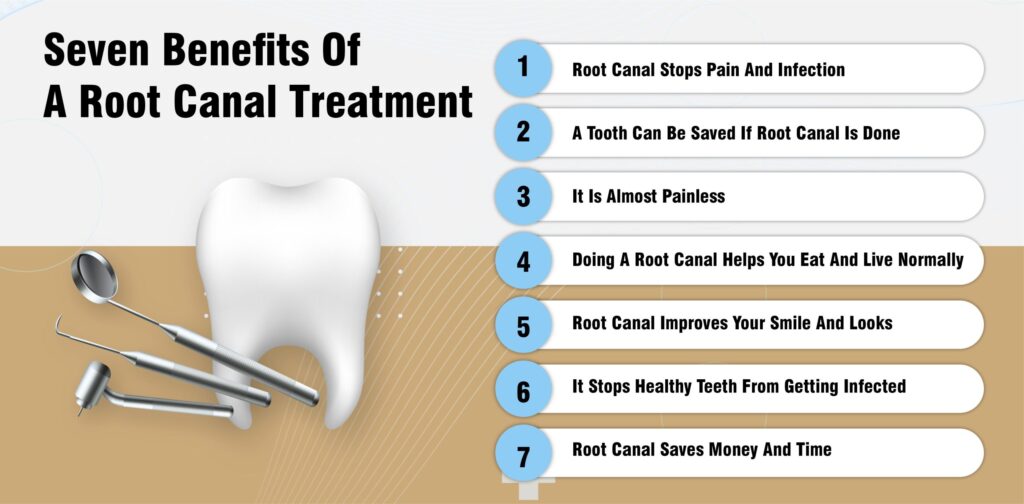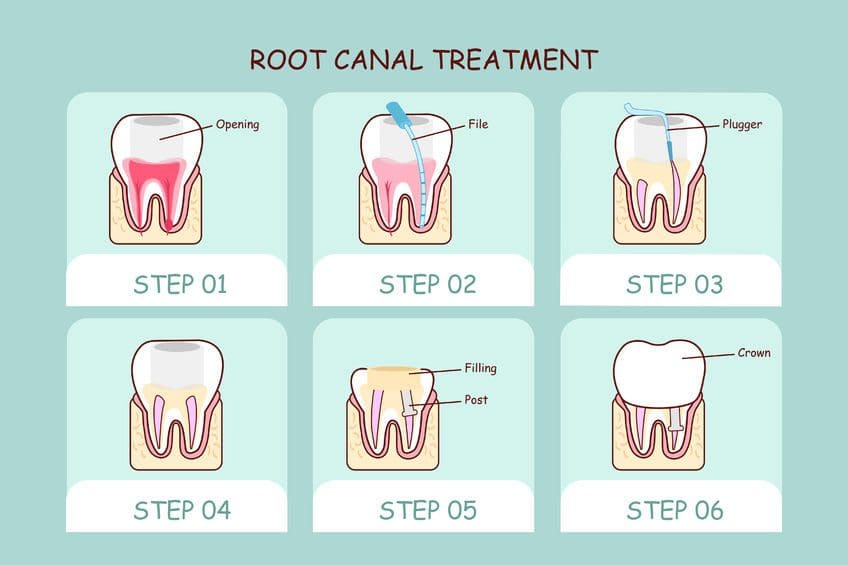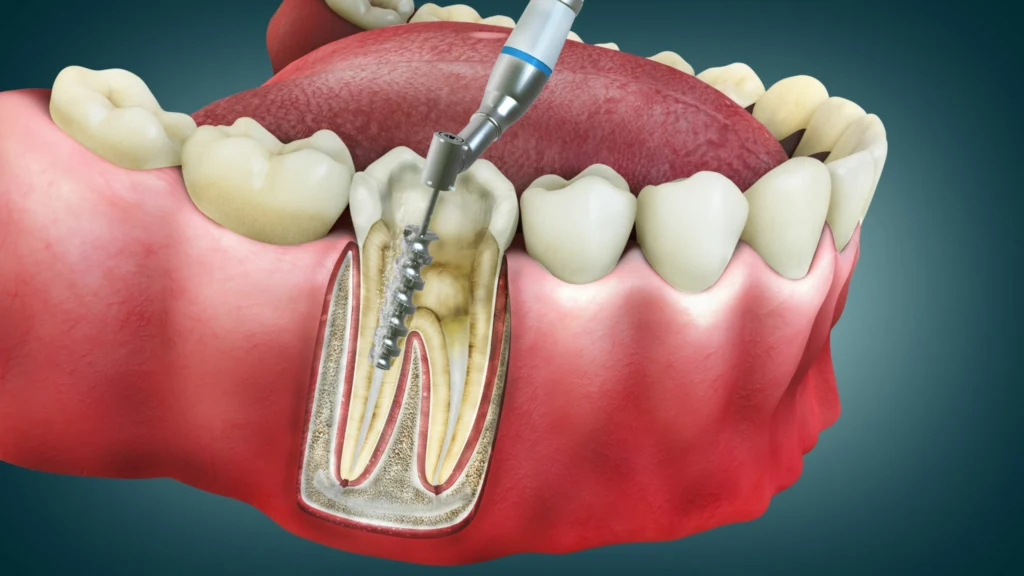Root Canal Treatment :

Root canal treatment is like a rescue mission for a tooth that’s in trouble. When the inside of a tooth gets infected or damaged, it can cause a lot of pain and could even lead to losing the tooth. That’s where root canal treatment comes in. The dentist cleans out the infected or damaged part inside the tooth, then fills and seals it up to keep it safe. It’s like giving the tooth a second chance to stay in your mouth and keep doing its job without causing you any more pain.
Five amazing advantages of undergoing a root canal treatment

Pain Relief: First and foremost, a root canal treatment helps to relieve the intense pain caused by an infected tooth. By removing the damaged tissue and nerve inside the tooth, the treatment eliminates the source of the pain, allowing you to feel much better.
Saves Your Tooth: Rather than extracting the tooth, a root canal treatment saves it. This means you get to keep your natural tooth in place, avoiding the need for a gap or replacement tooth. It’s like giving your tooth a second chance to stay healthy and functional.
Restores Functionality: After a root canal, your tooth can still do its job properly. You can bite, chew, and speak just like before, without any discomfort or difficulty. It restores the functionality of your tooth, so you can continue to enjoy your favorite foods and activities.
Prevents Further Infection: By removing the infected tissue and sealing off the tooth, a root canal treatment prevents the infection from spreading to other teeth or parts of your mouth. This helps to protect your overall oral health and prevents future complications.
Natural-Looking Results: Once the root canal treatment is complete, your dentist will typically restore the tooth with a crown or filling. These restorations are designed to look and feel like your natural teeth, so your smile remains beautiful and natural-looking.
Root Canal Treatment Step-By-Step

- Diagnosis: The dentist examines your tooth and takes X-rays to determine if you need a root canal. Signs of infection or damage, such as severe toothache, sensitivity to hot or cold, or swelling, indicate that a root canal may be necessary.
- Anesthesia: Before starting the procedure, the dentist numbs the area around the affected tooth with local anesthesia. This ensures you won’t feel any pain during the treatment.
- Accessing the Tooth: Once the area is numb, the dentist creates a small opening in the top of your tooth to access the infected or damaged pulp (the soft tissue inside the tooth).
- Removing the Infected Tissue: Using special instruments, the dentist carefully removes the infected or damaged pulp from inside the tooth. This eliminates the source of the pain and prevents further infection.
- Cleaning and Shaping: After removing the pulp, the dentist cleans and shapes the inside of the tooth’s root canals to remove any remaining bacteria and debris. This step ensures the tooth is thoroughly disinfected and ready for sealing.
- Filling the Canals: Once the root canals are clean and shaped, the dentist fills them with a rubber-like material called gutta-percha. This material seals off the canals to prevent bacteria from re-entering and causing infection.
- Sealing the Tooth: After filling the root canals, the dentist seals the opening in the top of the tooth with a temporary or permanent filling material. This seals off the tooth to protect it from further infection.
- Restoration: In some cases, a tooth that has undergone a root canal may need additional reinforcement. The dentist may recommend placing a crown or other restoration on the tooth to restore its strength, function, and appearance.
- Follow-up: After the root canal treatment is complete, the dentist will schedule a follow-up appointment to check on the tooth’s healing and ensure everything is progressing as expected.
Conclusion
In conclusion, root canal treatment is a vital procedure that alleviates pain, saves natural teeth, and restores oral health. By effectively removing infected tissue, sealing the tooth, and providing long-term stability, it ensures a healthier, happier smile for years to come.

